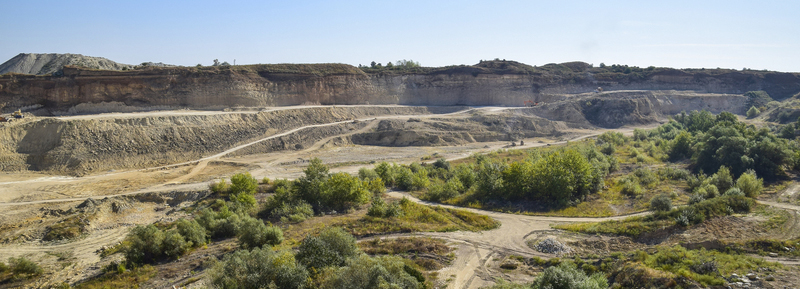There
is a New Sheriff in Town –
State Files Six New
Environmental Enforcement Cases
Touting it
as the “largest single-day environmental enforcement action in New Jersey in at
least a decade,” the State on August 1, 2018 filed six lawsuits seeking to
recover cleanup costs, three of which also seek recovery of natural resource
damages (“NRD”). The dramatic announcement yesterday left no doubt that the
Murphy Administration’s approach to environmental enforcement will be markedly
different than the essentially non-existent enforcement under the Christie
Administration. As the administration considers pursuing other cases, many
parties involved with environmentally impaired property should be aware of the
new enforcement initiative and renewed efforts to obtain NRD. These parties may
not realize that they have potential liability for NRD even after active
remediation is completed.
The message from the State industry is clear: “If you pollute our
natural resources, we are going to make you pay.” The view held by the new
administration is that companies have failed to act responsibly and as a result
have endangered the environment and health of the citizens of New Jersey.
Accordingly, the State will hold polluters responsible, which it is seeking to
do through robust enforcement.
As noted above, of the six lawsuits filed, three include claims
for NRD. According to the Attorney General, the State did not file a single NRD
case during the Christie Administration. It will be interesting to see how the
State will handle valuation of its NRD claims in these new cases, especially in
the wake of the criticism it received in the recent settlement of its case
against ExxonMobil. In that case, the State initially valued its claim at
approximately $9 billion, but ultimately agreed to settle the lawsuit for
approximately $225 million. Moreover, to date, the New Jersey Department of
Environmental Protection (“NJDEP”) has not been successful in litigating NRD
claims because it has not been able to appropriately support its valuation
calculations. While NJDEP had committed to adopting regulations on how to value
resources for damages calculations, it has not yet done so. Accordingly, NJDEP
has been defending its calculations on an ad hoc basis and has not yet been
able to establish that the value it seeks is commensurate with the loss or
impairment of the injured resource.
Parties that are remediating sites need to be aware that NRD
liability will not be resolved automatically through remediation. In fact,
recent practice has been to reserve the ability of the State to seek NRD. The
Response Action Outcome issued by a Licensed Site Remediation Professional
expressly states that NRD liability is not resolved. Very few parties who are
remediating their sites are thinking about resolving NRD, although it may be
more efficient and economical to resolve NRD through restoration during
remediation rather than waiting for the State to seek to recover compensatory
NRD. Although remediation does not protect against NRD liability, potentially
responsible parties are not without hope as there are a number of potential
defenses to NRD claims that should be evaluated (including statute of
limitations and valuation defenses).
All parties involved with environmentally impaired property,
including owners, operators, developers, lenders and others remediating sites,
need to be aware of the State’s new enforcement perspective as well as the
renewed focus on NRD as these will likely play a role in resolving liability
under the new administration.
NJDEP Adopts Amendments to Site Remediation Rules and Initiates New Program for Remediation of
"Heating Oil Tank Systems"
Contaminated site remediation projects in New Jersey are governed by an assemblage of rules and regulations that implement the State’s environmental statutes. On August 16, 2018, the NJDEP adopted amendments to a number of these rules. While the NJDEP has characterized the amendments as changes that will clarify the rules and further streamline the implementation of the site remediation program, there are a number of noteworthy revisions that modify existing remediation obligations and procedures. In addition, the NJDEP adopted new regulations that address discharges from a category of heating oil tanks identified collectively as “heating oil tank systems (“HOTS”).” Although the specific changes are numerous, below is a listing of the more significant rule changes. If you are involved in the investigation or remediation of a contaminated property, you should review the amendments to determine whether these changes affect your site.
Discharges of Petroleum and Other Hazardous Substances, N.J.A.C. 7:1E (the “Discharge Rules”)
The existing rules required “major facilities” (i.e., facilities that store a certain amount of hazardous substances) to address discharges in accordance with both the facility’s discharge cleanup and removal (“DCR”) plan and the Administrative Requirements for the Remediation of Contaminated Sites, N.J.A.C. 7:26C (“ARRCS”), which require the retention of a licensed site remediation professional (“LSRP”) to oversee the remediation. The NJDEP revised the Discharge Rules to give the facility the option to address the discharge either under the DCR plan or ARRCS. See N.J.A.C. 7:1E-5.7(a)2. The NJDEP, however, has reserved the right to order the facility to hire a Licensed Site Remediation Professional (“LSRP”) to conduct the remediation in the event the DCR plan is not sufficient to address the discharge.
New Jersey Pollutant Discharge Elimination System Rules, N.J.A.C. 7:14A (the “NJPDES Rules”)
Under the NJPDES Rules, certain discharges to groundwater that result from site remediation activities (e.g., discharges associated with sampling or to implement remediation) are authorized under a permit-by-rule, and therefore, do not require an individual permit. The NJDEP revised the NJPDES Rules to more clearly list the activities that are eligible for a permit-by-rule and identify the process for obtaining the NJDEP’s written approval for such a discharge. See N.J.A.C. 7:14A-7.5(a). The NJDEP also has added a requirement that dischargers stop any negative impacts caused by the discharge to groundwater and remediate those impacts in accordance with the applicable site remediation requirements. See N.J.A.C. 7: 14A-7.5(f).
Underground Storage Tank Rules, N.J.A.C. 7: 14B (the “UST Rules”)
The NJDEP revised the UST Rules to clarify that even if the site investigation of a suspected discharge from a UST demonstrates that no further action is required, an LSRP must still issue a response action outcome (“RAO”) to close the UST case. See N.J.A.C. 7:14B-7.2(c).
Industrial Site Recovery Act Rules, N.J.A.C. 7:26B (the “ISRA Rules”)
- The NJDEP revised the ISRA Rules to correct the timeframe by which the person responsible for conducting the remediation (“PRCR”) at an ISRA site must establish a remediation funding source (“RFS”) to conform with the timeframe set forth in the Brownfields Act. Under the revised rule, the PRCR must establish an RFS within 14 days after the NJDEP receives a remedial action workplan certified by an LSRP. See N.J.A.C. 7:26B-3.4(a).
- As a result of the decision in Des Champs Laboratories, Inc. v. NJDEP, 427 N.J. Super. 84 (App. Div. 2012), the NJDEP revised the de minimis quantity exemption to no longer require a certification that the industrial establishment is not contaminated above applicable standards in order to qualify for the exemption. See N.J.A.C. 7:26C-5.9(b). The NJDEP noted in its rule proposal, however, that it has the authority to require remediation of an industrial establishment under other environmental statutes, including the Spill Act, even if the industrial establishment qualifies for a de minimis quantity exemption.
Administrative Requirements for the Remediation of Contaminated Sites, N.J.A.C. 7:26C (“ARRCS”)
- The NJDEP amended the definition of “person” under ARRCS to include “a responsible corporate official, which includes a managing member of a limited liability company or a general partner of a partnership.” See N.J.A.C. 7:26C-1.3. In its rule proposal, the NJDEP noted that it was making this amendment to clarify the responsibility of certain business officials who have the actual responsibility for the condition or act resulting in a violation but neither prevent nor correct the violation. Commenters to the rule proposal objected to this change as a broad expansion of liability and an abrogation of the protections afforded by the corporate form under well established law.
- The definition of “statutory permittee” that is subject to remedial action permit (“RAP”) compliance has been adjusted to mean any person who becomes the owner, operator or tenant after an institutional or engineering control is placed on the property. See N.J.A.C. 7:26C-1.3. Also, ARRCS has been revised to require a “statutory permittee” to submit a RAP transfer application to the NJDEP within 60 days after the transfer of the property. See N.J.A.C. 7:26C-7.11
- A number of changes have been made to the public notice requirements at N.J.A.C. 7:26C-1.7, including the following:
1. The rules clarify that (1) the NJDEP does not need to be notified via the WARNDEP Hotline if the only discharge is historic fill, and (2) owners or operators of USTs only need to notify the NJDEP via the Hotline if a discharge is confirmed, not when a discharge is merely suspected. See N.J.A.C. 7:26C-1.7 (c) and (d).
2. The timing for providing public notice has been changed to 14 days prior to commencing field activities associated with the remedial investigation (as opposed to the remedial action) and proof of public notice must be submitted to the NJDEP within 14 days after providing public notice (as opposed to being required to provide the proof with the next remedial phase report). See N.J.A.C. 7:26C-1.7(g) and (h).
- The NJDEP has established new timeframes for providing notification to the NJDEP of the dismissal, resignation or incapacity of the LSRP and the identity of the new LSRP. These timeframes are now two working days for a site with an immediate environmental concern (“IEC”) and 45 days for all other sites. See N.J.A.C. 7:26C-2.3(c) and (d).
- A number of changes have been made to the RFS and financial assurance (“FA”) requirements, including the following:
1. The revised rules clarify that any person may establish FA on behalf of a responsible party; the rules previously only mentioned RFS. See N.J.A.C. 7:26C-5.2(i).
2. The trustee of a remediation trust fund cannot be the PRCR. See N.J.A.C. 7:26C-5.4(a)1.
3. A self-guarantee may be supported with financials audited in compliance with International Standards on Audits. See N.J.A.C. 7:26C-5.8(a)4.
4. If an engineering control is no longer needed at a site, the FA will not be released by the NJDEP until a RAP modification or termination is issued by the NJDEP. See N.J.A.C. 7:26C-5.11(e)2.
- The NJDEP has also made changes to the issuance of RAOs by LSRPs, including (1) clarifying that when there is a change in the remediation, the LSRP cannot issue an RAO until after the NJDEP issues a RAP modification or termination, (2) requiring that all wells no longer used for the remediation have been properly decommissioned or otherwise accounted for prior to issuing the RAO, and (3) adding a restriction that only the LSRP retained by the PRCR can issue an RAO for the remediation. See N.J.A.C. 7:26C-6.2(a) and (h). Notably, based on comments it received from stakeholders, the NJDEP decided not to adopt a proposed rule that required the correction, rescission, withdrawal, or invalidation of RAOs in certain circumstances. Among other reasons for objecting to this proposed rule, commenters were concerned that it would obligate an LSRP to withdraw an RAO even where the remedial action remained protective.
- Changes have been made to the classification exception area (“CEA”), Deed Notice, and RAP requirements, including the following:
1. The addition of an “indeterminate” CEA and “virtual RAP” for historically applied pesticides (“HAP”), giving HAP the same treatment as historic fill when it impacts groundwater. See N.J.A.C. 7:26C-7.3(h).
2. Changes to the Model Deed Notice to clarify that temporary disturbances to an engineering control do not require notice to the NJDEP or a modification to the RAP and that permanent alteration, improvement or disturbance of an engineering control is subject to a new process that requires (1) termination of the existing deed notice, (2) recording of a new deed notice and exhibits, (3) application for a RAP modification or termination, and (4) a remedial action report. See N.J.A.C. 7:26C Appendix B.
3. In the event of a subdivision of a site, a permittee now must within 30 days of municipal subdivision approval, request termination of the existing RAP and Deed Notice, record a new Deed Notice for each subdivided parcel and apply for a new RAP. See N.J.A.C. 7:26C-7.2(d). In addition, the NJDEP no longer requires a RAP modification when a municipality revises Block and Lot designations for a site or when the permittee changes its address, but the permittee is required to notify the NJDEP of these changes no later than the due date for the next remedial action protectiveness certification. See N.J.A.C. 7:26-7.7(a).
Technical Requirements for Site Remediation, N.J.A.C. 7:26E (the “Tech Regs.”)
- The NJDEP has clarified that remedial action (“RA”) is required when contaminants exceed any aquatic surface water quality standard, any ecological screening criterion or any site-specific ecological risk-based remediation goal approved by the NJDEP when an environmentally sensitive natural resource is present. See N.J.A.C. 7:26E-5.1(b)2.
- The NJDEP has also clarified that when importing alternative fill to a site without pre-approval from the NJDEP (1) each individual contaminant in the donor fill must be present in the receiving area above applicable remediation standards, and (2) the amount of alternative fill brought on-site does not exceed the amount necessary to restore the pre-remediation topography and elevation of the site. See N.J.A.C. 7:26E-5.2(b). This latter requirement has been hotly debated by developers who believe the requirement to obtain pre-approval from the NJDEP will slow down the pace and increase the cost of redevelopment, especially in flood zones where fill material is needed to raise the grade of properties above the required flood zone elevations.
- The presumptive remedy requirements for the remediation of schools, child care centers and residences no longer require a vapor barrier for historic fill and certain other contaminants that do not cause vapor issues. See N.J.A.C. 7:26E-5.3 Table 5-1.
- A remedial action workplan now must be submitted to the NJDEP prior to the implementation of the RA, as opposed to 60 days prior to the implementation.
Heating Oil Tank Systems Rules, N.J.A.C. 7:26F (“HOTS Rules”)
The NJDEP has adopted new regulations to address the closure and remediation of discharges from HOTS. HOTS include “residential aboveground heating oil tank systems,” “small aboveground non-residential heating oil tank systems” and “unregulated heating oil tank systems,” which are underground storage tank systems that are not otherwise regulated under the UST Rules. Since the majority of HOTS are owned by homeowners, the NJDEP thought it helpful to consolidate the rules relating to closure and discharges from these systems in one location. Owners or operators of HOTS may use a certified subsurface evaluator or an LSRP to address discharges (which must be hired within two business days after discovery of a discharge), and upon completion of any required remediation, the NJDEP will issue a No Further Action Letter (“NFA”). One particularly unique aspect of this new program is that under certain circumstances it allows residual soil contamination to remain at a residential property under a HOTS Deed Notice (which is different than a traditional Deed Notice) and does not require a RAP. A residential owner also may have the option of dealing with residual soil contamination by utilizing a “small quantity exemption” that allows the residential owner to leave less than 15 cubic yards of residual contamination under a residential building when excavation or treatment is impeded or impracticable. Notably, however, recording a HOTS Deed Notice or using a “small quantity exemption” memorializes the existence of the contamination, which could affect the value of the property.
Conclusion
Given the breadth of these amendments, anyone conducting or overseeing an investigation or remediation at a contaminated site should review these changes. In addition, more changes are on the horizon as stakeholders have been engaged with the NJDEP and Senator Bob Smith, Chairman of the Senate Environment and Energy Committee, to identify additional changes to improve the site remediation program, under an initiative commonly referred to as SRRA 2.0. Our environmental attorneys are engaged in this stakeholder process and can keep you informed of the latest developments in the SRRA 2.0 discussions.
The
ExxonMobil NRD Settlement: Beyond the Headlines
The
litigation between the State of New Jersey and ExxonMobil over natural resource
damages allegedly caused by former Exxon oil refineries in Bayonne and Linden
appears to have come to a close earlier this year when the New Jersey Supreme
Court rejected petitions filed by third parties challenging the State’s
settlement of its claims against Exxon. In particular, the State’s decision to
settle after trial for $225 million—where the State had previously claimed
damages of $8.9 billion—led to several challenges to the settlement. Although
the public attention surrounding the settlement focused on the large sums at
stake and the attendant political controversy, the Appellate Division’s
February decision approving the settlement, NJDEP v. ExxonMobil Corp.,
453 N.J. Super. 272 (App. Div. 2018), set important precedents in New Jersey
environmental law that will outlast the current controversy. First, the
Appellate Division found that one of the objectors lacked standing to challenge
the settlement, a rare result in a state that has allowed liberal access to the
courts to redress environmental grievances. Second, the Appellate Division also
issued the first binding legal precedent in New Jersey setting forth a standard
for courts to evaluate and either approve or reject the State’s settlement of
claims under the Spill Compensation and Control Act, N.J.S.A.
58:10-23.11 et seq. (the “Spill Act”).
New Jersey courts rarely reject challenges to the State’s actions
as an environmental regulator on the basis that the challenger, usually an
environmental group, lacks a sufficient stake in the controversy, a legal
concept referred to as “standing.” This liberal view of standing in New Jersey
is in contrast to the restrictive approach of the federal courts, which has
increasingly denied access to the federal courts to those challenging
government actions. ExxonMobil, however, is a rare case where New Jersey
courts held that a challenger lacked such access.
Among the parties challenging the ExxonMobil settlement were
environmental groups, such as the Sierra Club and the Delaware Riverkeeper
Network, and former New Jersey State Senator Raymond Lesniak. The Court held
that the environmental groups had standing to challenge the
settlement, but that Senator Lesniak did not. In a brief discussion, the Court
concluded that Senator Lesniak did not have a sufficient “personal or pecuniary
interest or property right adversely affected” by the allegedly inadequate
settlement, but that the environmental groups had standing based on “their broad
representation of citizen interests throughout this state.” The justification
for the disparate treatment is unclear. Senator Lesniak represented the
legislative district that includes the Linden refinery for decades and he lives
in Elizabeth, near the Linden refinery, which would seem to qualify as the
“slight additional private interest” that confers standing in cases of great
public interest. The somewhat cryptic discussion of standing in ExxonMobil
awaits development in future cases that could more clearly elucidate a standard
for determining whether challengers have standing. It seems clear based on ExxonMobil,
however, that environmental groups with a broad-based, geographically dispersed
membership are more likely than an individual or a small group of people from a
discrete geographical area to have standing in future similar cases.
The ExxonMobil decision also made new law for New
Jersey on the substantive issue of whether the court should have upheld the
terms of the settlement the State entered into with ExxonMobil. Perhaps
not surprisingly, the Law Division and then Appellate Division in ExxonMobil
adopted the same standard that federal courts long have used to evaluate CERCLA
consent decrees: whether the proposed settlement is fair, reasonable,
consistent with the goals of the statute, and in the public interest. Although
the State had advocated unsuccessfully before the trial court for an even more
deferential standard that would uphold its settlements absent clear and
convincing evidence of fraud, federal trial courts usually have deferred to the
agency defending the settlement and approved contested settlements under the
standard the Supreme Court adopted. For example, the Law Division in ExxonMobil
detailed the numerous litigation risks the State faced to conclude that the
settlement amount was reasonable; although objectors criticized the amount as
“pennies on the dollar” for the State’s claimed damages, these litigation
uncertainties meant that the State might have recovered far less than $225
million if the litigation had continued. These settlements become even more
difficult to reverse on appeal, as they are “encased in a double layer of
swaddling” because of the deference given to both the agency’s expertise and
the evaluation of the trial court, whose decision will be upheld unless it
abused its discretion.
Court review of a State settlement of Spill Act litigation is less
likely to recur in the context of environmental groups’ objections to the
settlement, as these cases typically do not attract the public scrutiny given
to the case against ExxonMobil. Rather, ExxonMobil’s standard for reviewing
settlements will be important in cases where the State brings claims against
multiple defendants for contributing to the same environmental harm. This is
because the Spill Act provides contribution protection to settling defendants,
which may leave the jointly and severally liable non-settling defendants to
bear more than their proportionate share of the liability. Thus, in the more
typical situation, other defendants, rather than members of the public,
challenge the settlement on the basis that the settling party will bear an
unfairly low share of the cost of remediation or natural resource damages. The ExxonMobil
standard could make it rather difficult for non-settling parties to overturn
future settlements that they believe are too low.
The legal principles the courts applied in approving the ExxonMobil
settlement will likely outlast today’s headlines. This decision may make it
more difficult for objectors to challenge the State’s actions as
an environmental regulator, and will provide the standard for evaluating
the State’s settlement of complex Spill Act litigation.
Storm
Water Runoff Courses Into an Expanding Gap in CGL Insurance Policies
New case
law suggests that environmental policies may be needed to fill widening gaps in
the primary insurance held by most businesses (i.e., Commercial General
Liability (“CGL”) policies). CGL policies typically contain a “pollution
exclusion” that excludes coverage for losses relating to “pollutants,” and the
definition of pollutants in standard CGL policies is extremely broad. In fact,
a federal court of appeals recently held that storm water runoff qualifies as a
pollutant, and, thus, no coverage exists under a CGL policy for damage relating
to such runoff. While certain jurisdictions, including New Jersey, may
interpret this exclusion more narrowly, businesses should carefully consider
their insurance portfolios to ensure they have appropriate coverage for their
operations.
As noted, the United States Court of Appeals for the Eleventh
Circuit determined a few months ago that storm water is subject to
the pollution exclusion contained in CGL policies. Centro Dev. Corp. v.
Central Mutual Ins. Co., 720 Fed. Appx. 1004 (11th Cir. 2018). The
pollution exclusion at issue defined pollutant as “any solid, liquid, gaseous
or thermal irritant or contaminant, including smoke, soot, fumes, acids,
alkalis, chemicals and waste.” In reaching its decision, the Eleventh Circuit
referred to a prior decision in which it found that storm water qualified as a
pollutant under the exact same language. The circuit court also considered
that, under the Clean Water Act “[w]hen rain water flows from a site where land
disturbing activities have been conducted, such as grading and clearing,” it
qualifies as a pollutant. Hughey v. JMS Dev. Corp., 78 F.3d 1523,
1525 n.1 (11th Cir. 1996). As a result, the CGL policy did not provide coverage
for the damage from the storm water runoff.
While many courts across the country are likely to reach a similar
conclusion, see, e.g., Devcon Int’l Corp. v. Reliance Ins. Co.,
609 F.3d 214 (3d Cir. 2010) (finding that CGL policy excluded coverage relating
to dust and fumes from a construction site), it is not clear whether more
policy-holder friendly jurisdictions would reach the same result. For instance,
the Supreme Court of New Jersey, which generally tends to be more
protective of policy holders than other jurisdictions, has interpreted the
pollution exclusion considered by the Eleventh Circuit as applying only to
“injury or property damage arising from activity commonly thought of as
traditional environmental pollution,” that is, those hazards that were
historically thought of as “environmental catastrophe(s) related to intentional
industrial pollution.” Nav-Its Inc. v. Selective Ins. Co., 183 N.J. 110,
124 (2005). Storm water runoff would not seem to be related to “intentional
industrial pollution,” but there have been few cases applying this standard in
New Jersey. In one recent case, the District Court of New Jersey applying New
Jersey law determined after extended motion practice that a CGL policy did not
provide coverage for cleanup of accumulated construction debris. Castoro
& Co. v. Hartford Accident and Indem. Co., 2018 WL 3217409 (D.N.J.
March 16, 2018). The accumulation of construction debris similarly does not seem
tantamount to intentional industrial pollution, so New Jersey may, at least in
this instance, be expanding the breadth of the pollution exclusion.
Nonetheless, these cases, and many others on this same topic,
highlight a gap in CGL policies. Environmental insurance policies, e.g.,
Pollution Legal Liability policies, have traditionally been purchased in more
limited instances when there are substantial environmental risks at play, but
such policies may provide a broader range of coverages that apply to more every
day risks, such as in the examples note above. In fact, Pollution Legal
Liability policies often provide express coverage for “pollution conditions,”
and this term generally is defined to include those items excluded as
pollutants in a CGL policy. Businesses should carefully consider their
insurance portfolios to determine whether their operations may trigger the
pollution exclusion in their CGL policy such that additional environmental
coverage is worthwhile.
EPA
Proposes Shift in Clean Energy Policy
States are
going to have a greater role in setting energy policy under the United States
Environmental Protection Agency’s (“EPA”) proposed Affordable Clean Energy
(“ACE”) Rule. EPA proposed the ACE Rule to replace the Obama Administration’s
Clean Power Plan (“CPP”), which never took effect due to legal challenges.
Unlike the CPP, where the EPA set standards and requirements for state plans,
the newly proposed ACE Rule tasks the states with a larger role in pursuing
clean power and addressing pollution from existing coal power plants, invoking
mixed emotions from various sectors of the community.
Under the CPP, the prior policy, the EPA was intimately involved
in regulating the energy sector and reshaping the grid and energy markets. The
proposed ACE Rule reduces EPA’s command and control role and allows the states
to set standards based on EPA guidelines. The Rule also provides states
additional time and flexibility in developing energy efficiency plans and
furnishes a list of technologies that states can use to establish performance
standards rather than strict emission standards.
Critics of shifting energy policy from the EPA to the states argue
that the states will be more vulnerable to the interests of fossil fuel groups,
which could weaken standards and emission controls. Moreover, some believe
offering existing technologies as performance standards instead of setting
emission reductions will result in fewer advancements in new energy
technologies.
Unlike the CPP that required the phase-out of coal fired
power plants, the proposed ACE Rule would keep such plants operating but
require them to become more efficient. It also promotes investments in clean
coal plants. Although plans to increase efficiency at coal plants may lead to
reductions in greenhouse gas emissions, it could result in increases in
traditional pollutants, like soot. The EPA does not refute this potential
outcome, but argues that such increases in pollutants can be addressed in other
ways.
Moreover,
as part of the proposed ACE Rule, the EPA is proposing to change the New Source
Review (“NSR”) Permitting Program, which requires a permit when there is a
“major modification” at a power plant. Coal power plant owners have argued that
they have not pursued efficiency measures in fear of triggering the need for an
NSR permit. The proposed change to the NSR permit program would allow plants to
use hourly emission rate increases, instead of existing annual emission rate
increases, to determine whether an NSR permit is needed. Arguably, this will allow
the installation of efficiency projects without triggering the NSR permit
requirements. Opponents of this change assert it provides a loophole that
allows existing coal power plants to avoid installing potentially costly
emission control equipment, even though many do not meet current emission
standards and would not be required to do so without the NSR permit
requirement. Even with these changes, it still may be difficult to determine
when an NSR permit is necessary.
The EPA claims that the proposed ACE Rule will lead to more
affordable energy bills, be less expensive than the CPP and obtain the same
results as the CPP. Others disagree. It is anticipated that the proposed ACE
Rule will be challenged in court, like the CPP. As such, it may continue to be
some time before there is an implementable clean energy plan from the EPA.
Regulatory
Update
New Jersey
Continues to Pursue Policy of Environmental Justice
Governor
Murphy’s administration previously issued Executive Order No. 23 (the “Order”)
to require New Jersey agencies to consider the principle of environmental
justice in implementing their responsibilities, and we are still waiting to see
how it will impact New Jersey residents and businesses.
According to the Order, environmental justice seeks to address the
disproportionately high impact of pollution and climate change on predominantly
low-income communities and communities of color, and strives to ensure that all
residents, regardless of their race, color, ethnicity or religion are able to
live in pollution-free communities and participate in decisions affecting their
community, homes, transportation and health. In order to accomplish
the goals of environmental justice, the Order tasks the NJDEP with developing
guidance that would allow other State agencies to incorporate the principle of
environmental justice into their actions and decisions. Since the issuance of
the Order on April 20, 2018, the NJDEP has collaborated with other State
agencies and public and private stakeholders to begin to prepare the required
guidance. It is anticipated that a draft will be available for review and
comment in October 2018, and that a final guidance document will follow in January
2019.
It is not yet clear how the guidance will impact site remediation
projects, but the principle of environmental justice suggests that its
intersection with contaminated sites might lead to enhanced community
involvement or more unrestricted cleanups in certain areas.
For additional information, please visit www.nj.gov/dep/ej.
New Jersey Legislative Update
Recently Enacted Environmental Laws
P.L. 2018, c.85: (S2646) Appropriates funds to NJDEP for environmental infrastructure projects for FY2019.
Recently Introduced Environmental Bills
AR33/AR251: Urges EPA to accelerate cleanup of 17-mile Lower Passaic River portion of Diamond Alkali Superfund site. Status: Introduced; Referred to Assembly Environment and Solid Waste Committee.
ACR85/SCR134: Proposed constitutional amendment to make State trustee of public natural resources and guarantee to the people other environmental rights. Status: Introduced; Referred to Assembly Agriculture and Natural Resources Committee.
AR168/SR85: Supports designation of Atlantic City as international center on global warming and climate change. Status: Introduced; Referred to Assembly Environment and Solid Waste Committee.
A2892/A2403: Provides purchasing preference to local and environmentally responsible businesses in awarding of State contracts. Status: Introduced; Referred to Assembly State and Local Government Committee.
A4092: Authorizes performance of supplemental environmental project to replace portion of monetary penalities for environmental violations in certain circumstances. Status: Introduced; Referred to Assembly Environment and Solid Waste Committee.









